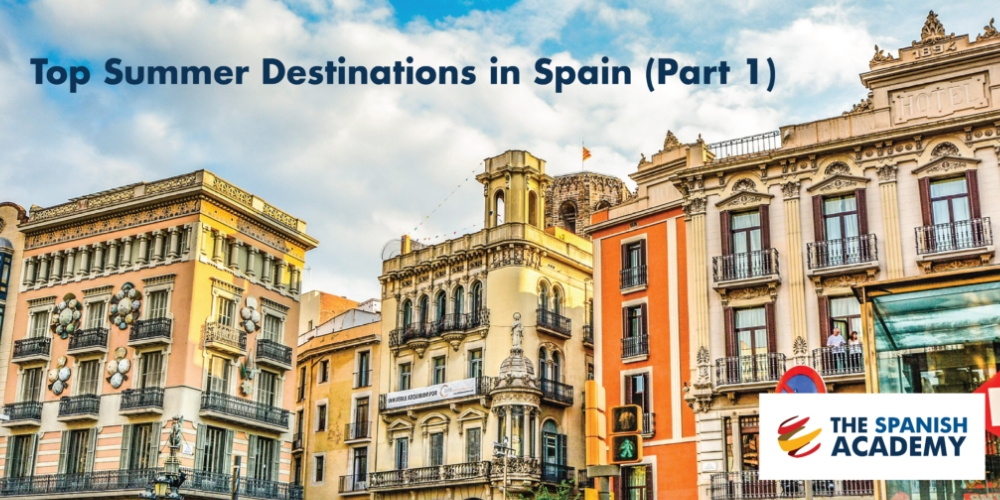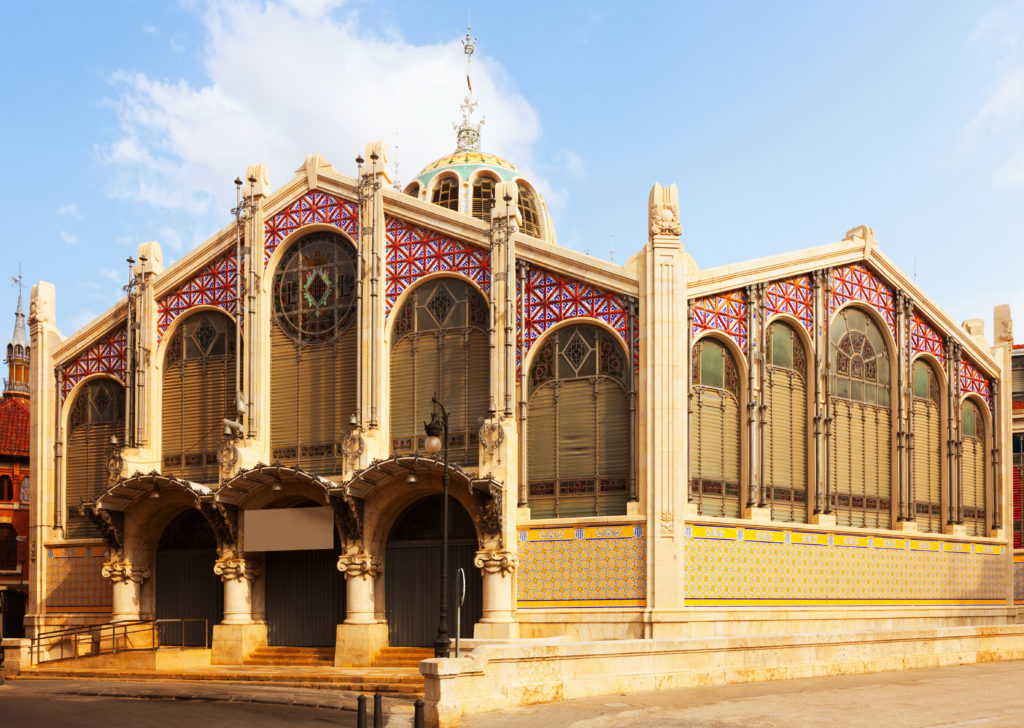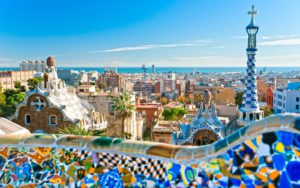Summer is around the corner! We are glad to present some of the top summer destinations for Spanish travelers and learners.
Ok! Here is a very tough pick for us. We could be presenting an endless list of beaches to visit this summer. Or we may also suggest the most enchanting destinations out of the touristic crowds in summer. Perhaps we may be tempted to choose a World Heritage Tour, where Spain ranks third (46 world heritage sites by UNESCO) worldwide after Italy and China, and right before France and Germany.
Instead, we have decided to address the selection prioritising the Spanish Language learning. Believe us, it hasn’t been easy. The right candidates in our list combine cultural heritage, gastronomy, outdoor activities, routes …
Now that summer is getting close, at The Spanish Academy, we keep receiving travel-related inquiries from our students. Most of them visit Spain for their first time, but for many others, it is a fantastic opportunity to rejoice their first experience in Spain.
Therefore, and as we advise them to do, we are glad to share with you a selection of our favourite places to spend a wonderful summer and make the most of your Spanish learning.
Because there is no better way for you to enhance your speaking and listening skills than being there for some time, we proudly suggest the following cities. Hope you enjoy! 🙂
VALENCIA
Located on the east coast of Spain, it is the third largest city in Spain. Founded as a Roman colony back in 138 BC, its historic city centre is one of the largest in Europe. Its heritage of ancient monuments and cultural attractions has made Valencia become one of the most popular destinations for tourists in Spain.
Valencia not only offers a wonderful city life but also the chance to explore some of the most beautiful beaches in Spain in summer if you travel south towards Alicante. Pristine waters and delicious gastronomy are awaiting you whenever you come to this gorgeous city.
Population: 800,000 inhabitants. 1.5 million inhabitants in its metropolitan area.
Weather: 20 °C annual average. 112 sunny days per year on average. Subtropical Mediterranean climate. Mild winters, hot and dry summers.
Interesting facts
- Fallas. Declared by UNESCO as intangible world heritage, it is probably the most famous Spanish festival. During this fiesta which takes part in March, the streets display huge sculpture-like monuments. For over a week, the whole city of Valencia becomes a playground for locals and visitors. You can find more information about this wonderful festival here.
- Paella. “Paella Valenciana” does not include seafood. It is originally cooked over a wood fire and among its ingredients you can taste rabbit and snails. Valencia is the birthplace of this delicious dish, and you cannot miss the opportunity to try the real one whenever you visit Valencia.
- Top beach quality. You can find the largest number of blue flagged beaches in Spain throughout the Valencian autonomous community. You have no excuses not to try some of them this summer.
Our picks for summer
Albufera
La Albufera is a freshwater lagoon as well as an estuary on the Gulf of Valencia coast. It belongs to the “Parc Natural de l’Albufera de València” (Valencian Albufera Natural Park). Watching a summer sunset is probably the best decision after a long day touring around. A very diversified flora and fauna paired with its natural biodiversity can be observed all year-round.
Lonja de la Seda
This Valencian Gothic-style civil building is one of the main cultural attractions in the city. Located in front of the Central Market (Mercado Central) and built at the end of the 15th century, it was declared UNESCO World Heritage in 1996. Merchants worked out contracts in former times at The Main Hall, which is a unique space with beautifully twisted columns that you must see if you visit Valencia.
Mercado Central (Central Market)
This indoor fresh market is not only a very touristic spot, but it keeps being the place where Valencians pick their freshest foods any day of the week. It is considered one of the most beautiful markets in the world. It is one of the biggest indoor fresh markets in Europe, counting over 400 vendors.
La Ciudad de las Artes y las Ciencias (The city of Arts and Sciences)
This large area is an entertainment-based cultural and architectural complex situated at the end of the former riverbed of the river Turia (which was drained and rerouted after a catastrophic flood in 1957). It is a perfect destination for families or couples to make the most of the sunny Valencian days. Riding a bike and stopping at a café to enjoy some Spanish conversations is just a perfect alternative to a busy shopping day in summer.
La Malvarosa
It is the beach of the Valencians. Although not the most scenic one, it is the closest one to the city and yet offers a wide range of services. Enjoying a Mediterranean summer lunch with a view is something you can do all year long if you feel like. Ending up your journey with a pleasant walk along its long promenade will freshen you up.
Also, you can pay a visit to the former fishermen’s quarters next to La Malvarrosa, El Cabañal. The area is currently under renovation in order to give back the glow it once had and opening up its streets to tourists.
BARCELONA
Spanish and Catalan are the official languages in Barcelona. Barcelona is very likely the most cosmopolitan city in Spain. According to official figures by the Catalan government, 1 of 5 inhabitants in the city is a foreigner. Thus, it is one of the favourite cities for foreigners in Spain in the summer. With over 22 centuries of history, it has become a cultural hub with a large gastronomy and art offer. It is well known worldwide as the capital of the Modernism, which makes it a top touristic destination in Spain. Barcelona is probably one of these unique destinations where you can mingle with people from very diverse nationalities and practice your Spanish anytime.
We are sure you have heard about Antoni Gaudi. And if not, you definitely should have a look at his masterpieces. Although more of his works can be seen throughout the entire Spanish territory, its main works are located in Barcelona. And you must come at least once to appreciate its unique style.
Population: 1.6 million inhabitants. 5.4 million inhabitants in its metropolitan area.
Weather: 21 °C annual average. Humid subtropical climate. Mild and humid winters, warm to hot summers.
Interesting facts
- Catalan Valentine’s day. Sant Jordi’s day is the Catalan version of Valentine’s day. It is a national holiday, and also Book Day (“Día del Libro” in Spanish).
- FC Barcelona museum is the most visited museum in Barcelona. Yes, football is a big thing in Spain. FC Barcelona, also known as Barça, attracts a huge amount of fans worldwide to its museum. With over 1.5 million visitors in 2011, the museum was the third most visited in Spain.
- No beaches before 1992. Hard to believe given the famous cities that now surround its coastline. It was not until the 1992 Olympics that the city had its first beach. At the moment, over 4 kilometres of coastline accounts for 7 blue-flagged beaches. And according to National Geographic, Barcelona has the best beach city worldwide.
Our picks for summer
Sagrada Familia
Designed by Catalan architect Antoni Gaudí, this large and unfinished Roman Catholic church is a UNESCO World Heritage Site, which has become one of the top attractions in the city. At the time of Gaudí’s death, only a quarter of his project was completed. Still incomplete, it is estimated to be finished by 2026 (the centenary of Gaudí’s death).
Park Güell
Located in the Gràcia district of Barcelona, it is a public park composed of gardens and full of architectural elements designed by Gaudí. It was built between 1900 and 1914 and opened to the public in 1926, and declared a World Heritage Site by UNESCO in 1984.
Inspired in organic shapes, Parc Güell is the reflection of Gaudí’s artistic plenitude. The whole park is creatively designed with beautiful structures and ornamental creations. It is definitely a perfect place to spend a sunny morning and enjoy the breeze of summer all along its beautiful paths.
La Barceloneta
No Mediterranean city can deny the importance of its beaches. And so does Barcelona. Located in the historical neighbourhood of the Ciutat Vella of Barcelona, La Barceloneta is a vibrant beach area full of amenities. Perfect for a chilling day in summer.
La Barceloneta is also home to a large Aquarium. Composed of 20 large tanks and a transparent tunnel, it is said to be the one of the biggest of Europe where one can discover an infinite quantity of marine life of the Mediterranean Sea.
El Tibidabo
This amusement park is one of the oldest in the world still functioning. Located on top of the Collserola Ridge in Barcelona, it was built in 1899 and opened to the public in 1905. It is the longest-running amusement park in Spain and Europe’s third oldest.
To us, it is one of our picks for its uniqueness. The original rides in the park are perfect for a family day. Do not miss the Giradabo, the large Ferris wheel, 20 metres in diameter and 500 meters above the sea level. It is highly advisable to pay a visit to Tibidabo Amusement park on a clear day to enjoy the fantastic views of the city and the Mediterranean sea.
El Barrio Gótico (The Gothic Quarter)
Among all the different neighbourhoods, this is probably our favourite. The Gothic Quarter is the centre of the old city of Barcelona. In this quarter you will find the remains of the city’s Roman wall and many more sublime medieval landmarks.
The labyrinthic street plan full of narrow streets and charming squares is perfect for pedestrians to wander around. Full of alternative shops and filled with trendy bars, clubs and Catalan restaurants all over its historic streets, it is the perfect choice for travelers in search of a historical walk.
Madrid
Madrid is a top destination for Spanish learners. One of the most important cities in Europe, it combines tradition and modernity and is continuously expanding. The capital of Spain is a welcoming destination for any tourist. The privileged location of the city allows you to visit very important cities such Salamanca, Segovia, Toledo in a short trip. It is highly recommended to visit the city in summer since most of its citizens choose to spend their summer by the sea. You will avoid the crowds.
Home to world famous writers like Quevedo, Góngora, Lope de Vega and Don Miguel de Cervantes during Spanish Golden Age, Madrid has preserved very well the look of its historic neighbourhoods and streets. Full of important landmarks, Madrid offers top-ranked museums in the called Golden Triangle of Art in its city centre. Art lovers can enjoy a visit to Prado Museum, the Reina Sofía Museum, and the Thyssen-Bornemisza Museum and appreciate a wide variety of masterpieces concentrated in a walkable distance between each of the museums.
Population: 3.2 million inhabitants. 6.6 million inhabitants in its metropolitan area.
Weather: 20°C annual average. Inland Mediterranean climate. Cool winters, hot summers.
Interesting facts
- The third biggest city in the European Union. After London (8.5 million inhabitants) and Berlin (3.7 million inhabitants), Madrid is third in terms of population within its centre.
- Largest royale palace in Europe. It is the largest royal palace by floor area, with 135,000 square meters and 3,418 rooms. Although named as the official residence of the Spanish Royal Family, the Spanish King does not reside in it.
- A bear in its coat of arms. In the official symbol of Madrid, you can see a bear rearing up on its hind legs feasting berries from a tree. The bear in the symbol stands for Madrid’s enduring growth, showing the importance of wood which is essential to building a country.
Our picks for summer
Parque del Retiro (Retiro Park)
This is to Madrid like Central Park to New York. This park is a green oasis in the middle of the busy capital. With over 125 hectares in size, it is home to over 15,000 trees. Very important gardens of different styles make it very rich from a botanical point of view.
Besides being the lungs of Madrid this park offers also cultural, leisure and sports activities all year long. Some of the favourite landmarks for tourists are its lake where visitors con row or the Glass Palace (a beautiful and romantic pavilion which is one the main examples of cast-iron architecture of the late 19th century in Spain).
Paseo del Arte (Art Walk)
This is the name for a very special area of Madrid boasting art and culture. It is a haven for art lovers. The walk stretches over one kilometre, and all along you will find some of the most important museums worldwide: the Prado Museum, the Thyssen-Bornemisza Museum, and the Reina Sofía Museum.
The Prado Museum
It is one of the most visited museums in the world because of its well-known status as one of the greatest museums in the world. Inside its endless alleys and ample rooms, you will find one of the world’s finest collections of European art (from the 12th century to the early 20th century). It also houses the single best collection of Spanish art.
Reina Sofía Museum
It is Spain’s national museum of 20th-century art. Mainly dedicated to Spanish art, this museum includes excellent collections of two excellent artists of the last century, Pablo Picasso and Salvador Dalí. One of the main attractions for the visitors is the spectacular painting Guernica, by Pablo Picasso. Besides the wide Spanish collection, you may also find some international works by Francis Bacon, Georges Braque, Vasily Kandinsky, Paul Klee, Man Ray, Damien Hirst… to name a few.
Thyssen-Bornemisza Museum
This museum was once the second largest private collection in the world after the British Royal Collection. It contains over 1,600 paintings, and this museum fills the historical gaps in its counterparts’ collections.
Gran Vía
Gran Vía is probably one of the most famous avenues of Madrid. One of the city’s main arteries, its construction took place between 1910 and 1931 marking the modernisation of the city. This avenue adopted the architectural trends from the United States and there you may find the first skyscrapers of the city. Gran Vía is now a vibrant street full of international shops, cafés, and theatres, which makes it one of the favourite attractions for tourists.
Mercado de San Miguel (San Miguel Market)
Although more gourmet markets are present in Madrid, this market is one of the favourites for local and international foodies. This centenary establishment became the first gastronomy market in Madrid in May 2009. Originally opened in May 1916 as a food market, it is now a must for those seeking any sort of Spanish delicacies. Visitors can enjoy foods from all over Spain in its 30 permanent food stalls. From the best Iberian ham to the freshest seafood from the north, any choice will surely delight your palate.
Plaza Mayor (Main Square)
The Plaza Mayor (Main Square) was built between 1598 and 1621. It is a beautiful landmark in the city of Madrid. Located only a few blocks away from the Puerta del Sol (another famous landmark in Madrid) and counting a total of nine entrance ways, the Plaza Mayor is rectangular in shape and is surrounded by three-story residential buildings with multiple balconies facing the Plaza.
So here was the first part of our summer-related article. Stay tuned for the next post and feel free to contact us for further information and useful information about the summer destinations we picked for you.






